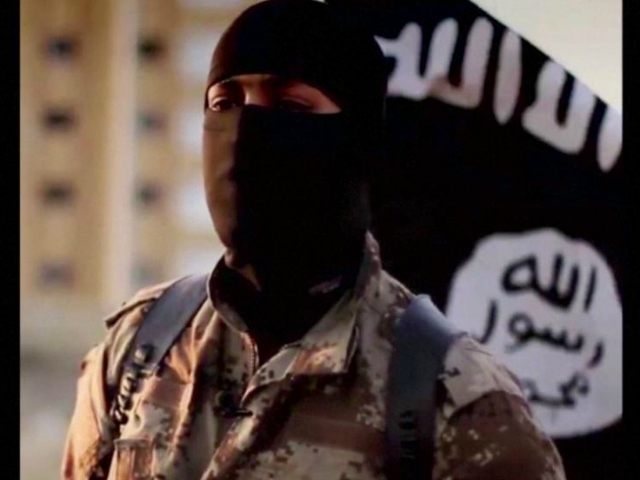The number of Islamic State (ISIS/ISIL) supporters in Afghanistan who have expressed a desire to attack the United States is growing, warned Gen. John Campbell, the top commander of American and NATO forces in the country.
A new Pentagon report and Rep. Robert Pittenger (R-NC), chairman of the Congressional Task Force on Terrorism and Unconventional Warfare, echoed Campbell’s warning that ISIS is proliferating in Afghanistan.
The alarm bells are ringing less than a year after ISIS announced the establishment of its Khorasan province in January. Khorasan is a historic name for a region that covers large areas of Afghanistan, Pakistan, Iran, parts of India, and other surrounding countries.
“They don’t have the capability right now to attack Europe, or attack the homeland, the United States, but that’s what they want to do, they’ve said that’s what they want to do,” acknowledged Campbell, referring to ISIS loyalists in Afghanistan, in an interview with the Associated Press (AP).
A new Department of Defense (DOD) report asserts that the Islamic State (IS) branch in Afghanistan—Khorasan Province (IS-KP)—has become “more operationally active” there by conquering territory and openly engaging in turf battles with the Taliban.
IS-KP “has progressed from its initial exploratory phase to a point where they are openly fighting the Taliban for the establishment of a safe haven, and are becoming more operationally active,” says the Department of Defense (DOD) report.
Rep. Pittenger echoed both Campbell and the DOD report when interviewed by Breitbart News soon after his recent visit to Afghanistan.
“It’s definitely growing,” Pittenger told Breitbart News, referring to ISIS in Afghanistan. “It started out as a small colony, down in the southeastern border [with Pakistan], but they’re definitely growing in the region.”
“Their presence poses a threat to the United States,” he added. “They’re clearly focused on attacking U.S. interests. It’s a very conflicted and very challenging situation.”
Pittenger said his comments stem from conversations he had with U.S. military officials in Afghanistan. The North Carolina Republican noted that he spent about two hours with Gen. Campbell.
Gen. Campbell told AP that the number of ISIS loyalists in Afghanistan is growing.
The commander declared that ISIS supporters want to assimilate Afghanistan into the Khorasan province of its “caliphate.”
ISIS wants to establish “the base of the Khorasan province” in Jalalabad, the provincial capital of Nangarhar province in eastern Afghanistan, along the Pakistan border, and “work their way up into Kunar” province immediately north, Campbell told AP.
Campbell also revealed that “foreign fighters” from Syria and Iraq have linked up with Afghans who have declared loyalty to the group in Nangarhar, adding that there are “indications” that ISIS is trying to consolidate ties with the group’s leadership in Syria and Iraq.
“I’m sure there are folks who have come from Syria and Iraq — I couldn’t tell you how many but there are indications of some foreign fighters coming in there,” he told AP.
ISIS controls an estimated third of Iraq and Syria.
Many Islamic State loyalists in Afghanistan were “disenfranchised” Afghan and Pakistani members of the Taliban who have fought fierce turf battles with the Taliban in recent months, said Campbell.
Campbell’s comments comport with the findings of the Pentagon report, which revealed that IS-KP has “seized pockets of terrain from the Taliban in Nangarhar Province” and is growing by recruiting “disaffected Taliban” and others.
Militants from the ethnic Uzbek minority in Afghanistan have also been linked to ISIS.
In a video released July 31, the Islamic Movement of Uzbekistan (IMU) pledged allegiance to the jihadist group.
Overall, violence in Afghanistan has increased in Afghanistan and the security situation has worsened since June, according to the DOD report.
Taliban-perpetrated violence alone has increased since the President Obama and NATO ended their combat mission in December 2014 and transitioned to a train, advise, and assist (TAA) role, suggests the Pentagon analysis.
“The Taliban-led insurgency has likely been emboldened by the coalition’s transition from direct combat operations to a TAA role and the accompanying reduction of coalition combat enablers,” reports DOD. “As a result, the Taliban will continue to test the ANDSF [Afghan National Defense and Security Forces] aggressively in 2016.”
The U.S. has reduced its miltary presence in Afghanistan to 9,800 troops.
Insurgents have been able to carry out more effective attacks and increase casualties among Afghan security forces, notes the Pentagon report.
Rep. Pittenger told Breitbart News that the Afghan security forces are “not at all” capable of operating indpendently, without the assistance of U.S. troops.
“I think if we left, it would all collapse — No different than what happened in Iraq,” he said. Obama plans to maintain a 5,500-strong U.S. force in Afghanistan beyond 2016.
“I think in principle, yes [Gen. Campbell] would welcome additional forces there and that’s my take,” said Rep. Pittenger. “He was committed to the president’s direction and did not step out of line on that, but it was my sense that more forces would enable him to have a broader capability to train, equip, and advise the Afghan forces.”
A United Nations report that surfaced in September revealed that ISIS is expanding its presence in Afghanistan, actively recruiting followers in nearly three-quarters (25) of the country’s 34 provinces.
According to a top Russian military official, there are an estimated 3,000 ISIS-linked militants in Afghanistan.

COMMENTS
Please let us know if you're having issues with commenting.